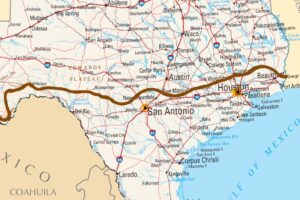Peter Van Geit had planned spend six months this year fast hiking 5,000km and exploring new passes across the Indian Himalaya. After the pandemic hit, foiling his plans, he started a new project — creating detailed hiking maps of the area.

Geit’s digital map enlarges to any scale. Here, a screenshot of the trail network across Zanskar, Ladakh and Lahaul. Image: Peter Van Geit
Two years ago, Van Geit started consolidating hiking trails and passes from various sources. Combining this with knowledge gained from his own Himalayan explorations, he created a centralized repository of topographic information for the Indian Himalaya. “One of the reasons very few hikers head to the Indian Himalaya is the absence of good, detailed hiking maps, compared to, say, Nepal or the European Alps,” he says. “Most of the Western Himalaya are undocumented, despite a vast, beautiful trail network.”

The same map, zoomed in, reveals contours, glaciers, rivers and lakes. Image: Peter Van Geit
So far, he has pulled together over 1,000 trails across Uttarakhand, Himachal Pradesh, Ladakh and Jammu and Kashmir. It shows 600 passes, 700 high-altitude lakes and more than 10,000 reference points. Using GIS (Geographic Information System), he combined all the geospatial data (passes, trails, lakes) from fixed-scale paper maps to create one digital map that can be used at any scale.
It allows hikers to see elevation profiles and download GPS logs onto their phones rather than having to carry multiple, less detailed paper maps. “The map has more trails than anyone could ever cover in a lifetime,” he says. “It took me months to plan a long traverse across the Himalaya. With this new digital map, you have all the information in a single place.”

An elevation profile of the Jalsu pass in Himachal, using satellite-generated data from NASA. Image: Peter Van Geit
Everything is open sourced, so can be accessed with any Open Street Maps viewer or mobile app. Other hikers can add information to it and help the resource grow.
Van Geit and a friend have also combined hiking trails with DEM (Digital Elevation Model) data from NASA to add elevation profiles and allow users to run queries to find glaciers, rivers and villages, and figure out route options from A to B.

From DEM data, hikers can generate 3D views of the topography around a given hiking trail. Image: Peter Van Geit
This has been a passion project for Van Geit. He believes that the Indian Himalaya have huge international hiking potential, although “in India, the independent hiking community is non-existent.” He hopes that by creating the maps and various webinars, more people will explore and come to appreciate the region.
“I’ve been privileged as a long-distance explorer to discover many beautiful, undocumented routes and I’m happy to share them with other independent, self-supported hikers,” he says.
He is still adding to his maps: Currently, he is working his way through hundreds of detailed old Soviet army maps that “contain a treasure of hiking trails”.
More details of Van Geit’s project can be found here and a how-to video on map usage is embeded below.





